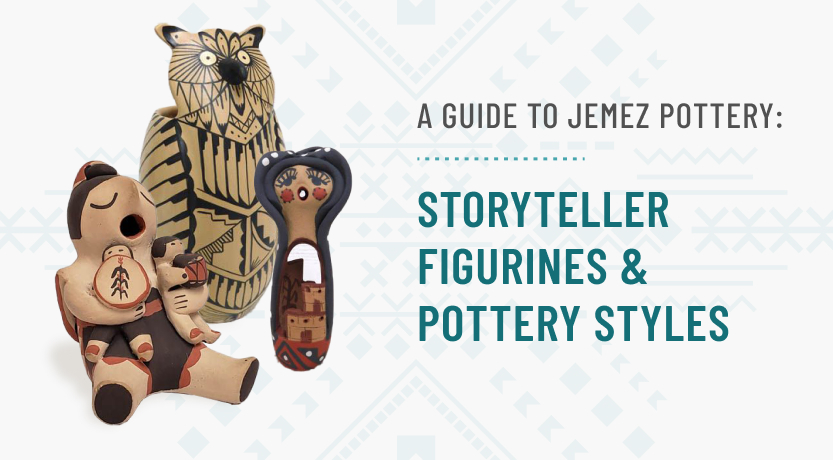
Jemez Pueblo is located in northern New Mexico and is home to the Jemez people, who have been creating pottery for thousands of years. Jemez pottery is known for its unique style and exquisite craftsmanship, which has gained recognition worldwide. The unique earth-tone colors of Jemez pottery blend stone-polished and matte finishes along with painted and etched designs.
In this guide, we’ll explore the rich history of Jemez pottery, its unique storytelling figurines, and the different pottery styles that have emerged over the years.
History of Jemez Pottery
Originally, Jemez pottery was utilitarian, used for such tasks as cooking and storing food and water. As time passed, the Jemez people began to incorporate artistic elements into their pottery and it became a way to express their culture and traditions.
During the early 18th century, the people of Jemez stopped making pottery and turned to purchasing wares from other Pueblos, particularly Zia. However, in the 1920s and 30s, they resumed pottery production, drawing inspiration from Zia’s traditional designs and styles.
Storyteller Figurines
One of the most iconic and recognizable forms of Jemez pottery is the storyteller figurine. First created in the 1960s by Jemez potter Helen Cordero. Cordero’s first storyteller figurine was modeled after her grandfather, who would tell her stories about their culture and traditions. The figurine is typically a seated male or female figure with one or many children in their lap or at their feet.
The storyteller figurine expresses the importance of passing down traditions and culture from one generation to the next. The children on the figurine are often depicted listening to the storyteller with rapt attention, eager to learn and absorb the knowledge being shared with them.
Pottery Styles
Jemez pottery has evolved over time, with different styles emerging as new techniques and designs were incorporated. Here are some of the most notable styles:
Traditional Style:
The traditional style is characterized by earthy colors and traditional designs, such as geometric patterns and rainbows. The pottery is typically hand-coiled and pit-fired.
Contemporary Style:
The contemporary style incorporates modern designs and techniques while still retaining the traditional elements of Jemez pottery. The pottery is often wheel-thrown and fired using electric or gas kilns.
Polychrome Style:
The polychrome style is characterized by the use of multiple colors, often in intricate designs. The pottery is typically hand-coiled and painted with natural pigments and pit-fired.
Sgraffito Style:
The sgraffito style of Jemez pottery involves carving intricate designs into the clay before firing. The pottery is typically hand-coiled and pit-fired.
Conclusion
Jemez pottery is a beautiful and unique art form that has been passed down through generations. The pottery reflects the rich culture and traditions of the Jemez people, and the storytelling figurines represent the importance of passing down knowledge from one generation to the next. Whether you’re a collector or simply appreciate the beauty of Native American art, Jemez pottery is a must-see.
At Kachina House you can find a wide array of Jemez pottery, from vases, pots, bowls, wedding vases, storyteller figurines, and more!

